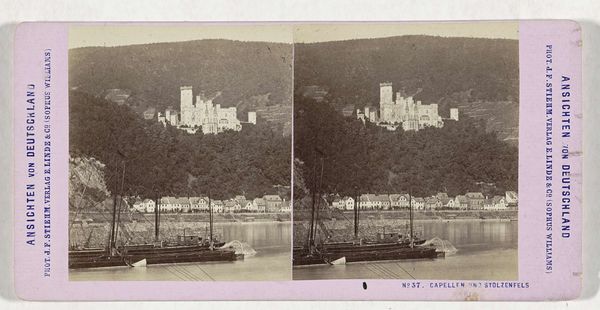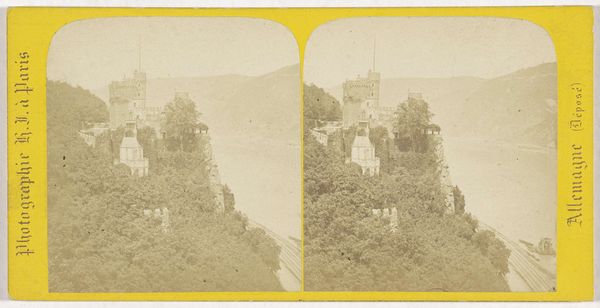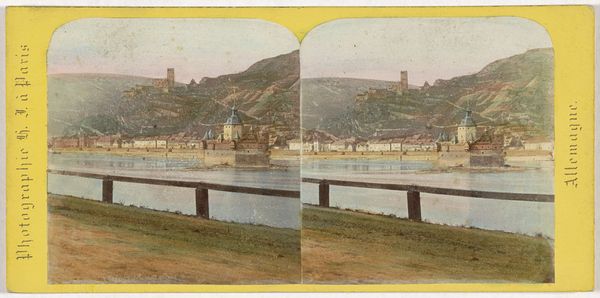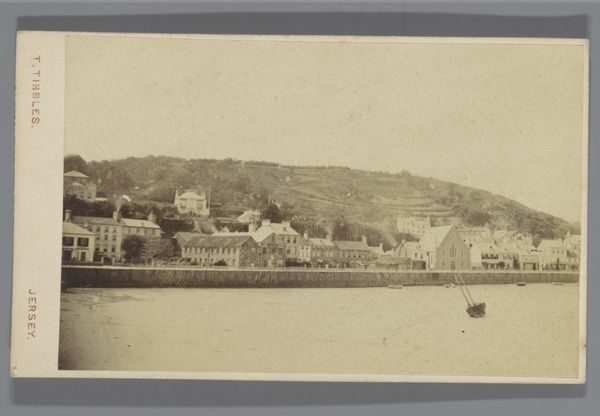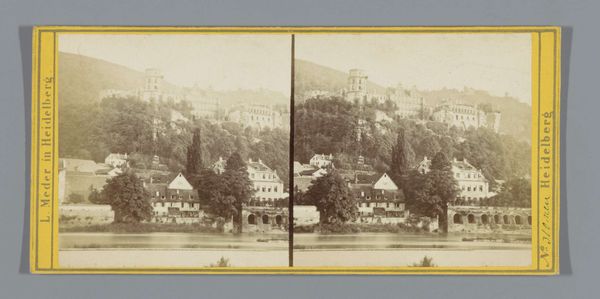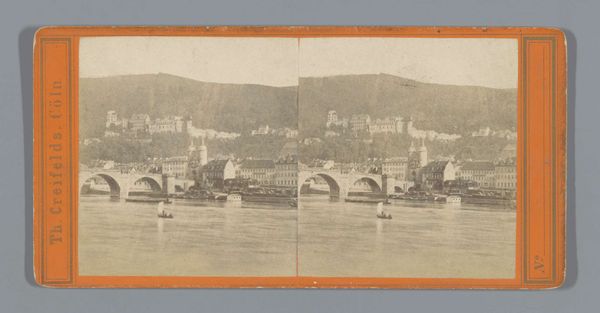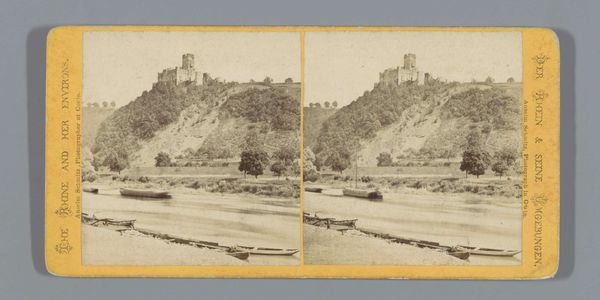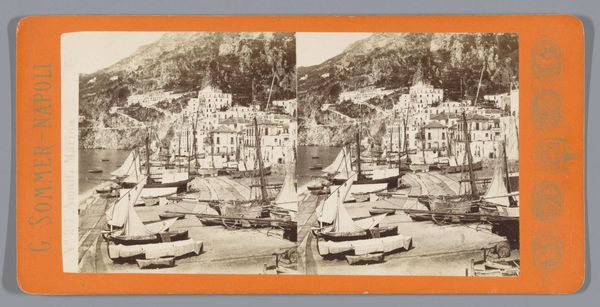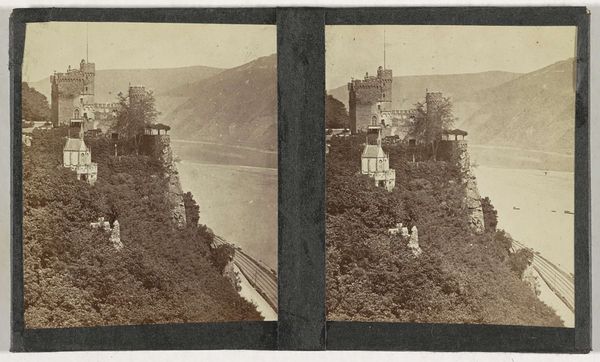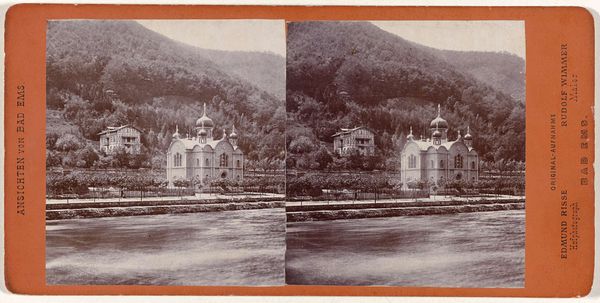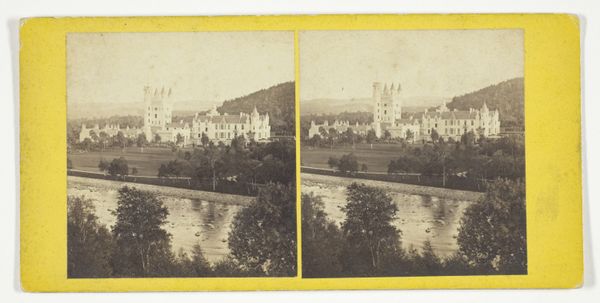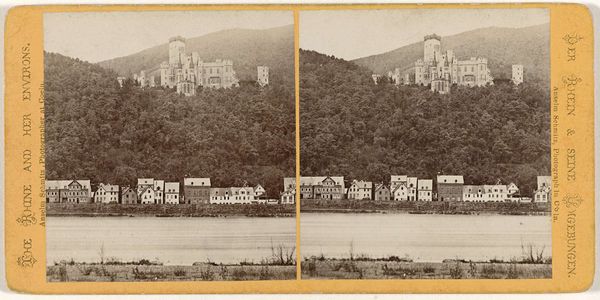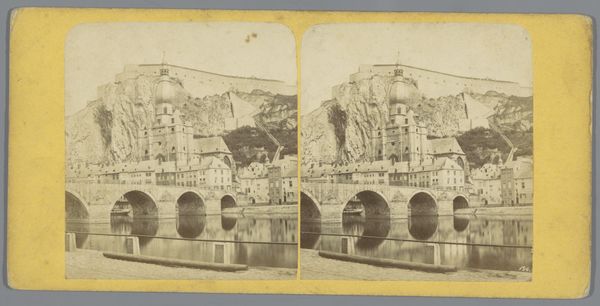
Dimensions: height 86 mm, width 175 mm
Copyright: Rijks Museum: Open Domain
Curator: This intriguing gelatin-silver print offers a stereoscopic view of Stolzenfels Castle near Koblenz, Germany. The photograph is attributed to Johann Friedrich Stiehm and dates from somewhere between 1869 and 1872. Editor: There’s a pervasive stillness about it. A kind of sepia-toned dreamscape. It's beautiful, in a melancholic way; it is quite desaturated which makes it appear distant and a bit haunting. The detail in the castle and foliage, set against that aged paper, it's quite compelling. Curator: The stereoscopic format was incredibly popular during this period, offering viewers a sort of virtual reality experience, allowing people to feel as if they were transported to distant locales, and in this instance to Germany from their homes. These views became a significant part of visual culture. Editor: It speaks volumes about the gaze of the colonizer, though, doesn't it? The perspective afforded by this viewing platform—a wooden pier jutting into the water—and the way the single figure is framed against the landscape. Who was this figure? What class? Their pose seems intentionally crafted; I can not help but think about the access granted and subsequently denied, especially across class and geopolitical structures. Curator: That's an interesting interpretation. Certainly, these images often catered to a specific demographic, typically middle to upper class, fueling a desire for exploration and romanticization of other cultures and histories through consumption, but I feel like we are projecting too much given we know very little. The romanticism imbued to the era does certainly create a unique visual perspective worth examining more. Editor: Agreed, but that aesthetic cannot be devoided from an era’s politics. I believe it underscores a kind of controlled vision. Think of the implications – controlling visual representations can control narratives. Curator: Certainly! Perhaps Stiehm's view served a function far beyond documenting a physical location, offering his audiences an implicit experience within a social and political milieu that underscored their place as observers of progress, history, and in some way culture itself. Editor: Precisely! The romantic ideal alongside imperial ambitions – it's all interwoven into something we are now actively unwrapping. That's why a seemingly straightforward landscape still has immense contemporary significance.
Comments
No comments
Be the first to comment and join the conversation on the ultimate creative platform.
